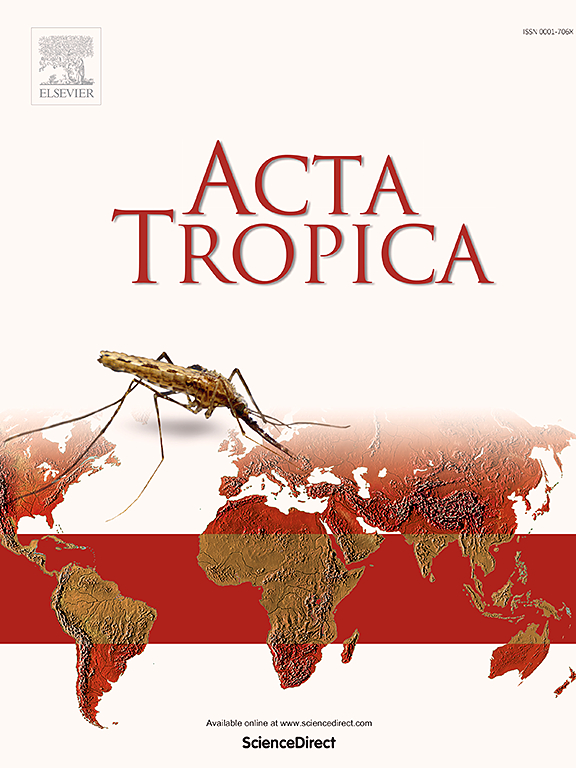Incidence and prediction of cutaneous leishmaniasis cases and its related factors in an endemic area of Southeast Morocco: Time series analysis
IF 2.1
3区 医学
Q2 PARASITOLOGY
引用次数: 0
Abstract
Cutaneous Leishmaniasis (CL) is a neglected vector-borne disease that poses a serious health problem in many countries including Morocco. The present study aimed to determine the incidence and trend of CL from 2018 to 2022 and its forecast for 2024 –2026 in an endemic region of Morocco. The study also examined the association of various environmental, demographic, and socioeconomic factors with CL cases using ordinary least squares (OLS) regression. The Auto-Regressive Integrated Moving Average (ARIMA) model was applied to predict the number of new CL cases based on time-series data of monthly CL cases from January 2010 to December 2023. Over the 5-year study period, 2,713 cases of CL were reported, with an accumulated incidence rate of 859.44 cases per 100.000 inhabitants. The overall incidence rate decreased from 254.45 per 100,000 individuals in 2018 to 63.19 per 100,000 in 2022 with an average annual decrease rate of 23.77 %. Interestingly, the disease was slightly more common in females and the age group of 0–5 years was the most affected. In this study, single lesions were more prominent (65 %) and frequently affected facial parts (34 %). In addition, the seasonal variation showed a peak incidence in winter. The OLS analysis revealed a significant correlation between vulnerability rate, population density, altitude, urbanization, and the number of cases. The results showed a decreasing trend in the forecasted numbers of CL cases with approximately 59 cases per year. These findings can be used by relevant authorities to develop effective interventions for the prevention and control of CL.

求助全文
约1分钟内获得全文
求助全文
来源期刊

Acta tropica
医学-寄生虫学
CiteScore
5.40
自引率
11.10%
发文量
383
审稿时长
37 days
期刊介绍:
Acta Tropica, is an international journal on infectious diseases that covers public health sciences and biomedical research with particular emphasis on topics relevant to human and animal health in the tropics and the subtropics.
 求助内容:
求助内容: 应助结果提醒方式:
应助结果提醒方式:


